Parts of the Western world are gripped by a crisis of strangers. Men, women and children – collectively we describe them as civilians, citizens and humans – are fleeing violence, poverty and competing definitions of sovereignty in Syria, Iraq, Afghanistan, Pakistan, Libya, Eritrea, Somalia and other states.
Some are seeking refuge in Europe; others are placing their hopes in refugee settlements such as Za’atari in northern Jordan and Dadaab in northeastern Kenya.
These movements – some small and unrecognised, others highly visible and epochal in character – are of interest to artists. This makes perfect sense. The stranger is, after all, a recurring figure in paintings, films and novels.
This recurrence is particularly noticeable in contemporary art. In his recent book, The Migrant Image (2013), art historian TJ Demos offers a timely look at how “documentary engagement” with the subject of migrancy is refiguring artistic practice and theoretical debate.
He describes the refugee as a “repressed figure of the last century’s otherwise celebrated glorious nationalisms, utopian political projects and vaunted technological achievements”. Like many writers grappling with the slippery subject of homelessness, Demos endorses the “insistently political” analysis of migrancy offered by exiled Palestinian literary critic Edward Said.
“Our age,” reads a passage from Said’s well-known 1984 essay on exile, “with its modern warfare, imperialism and the quasi-theological ambitions of totalitarian rulers – is indeed the age of the refugee, the displaced person, mass migration.”
Prominent role
Many of the artists discussed by Demos – including Steve McQueen, Mona Hatoum and Hito Steyerl – use the camera to produce still and moving images. Still photography in particular has played a prominent role in shaping our collective recognition – I hesitate to say understanding – of displacement, migration and exile.
Whether one looks at the grim photographs produced by Gilles Peress in 1994 Rwanda or the on-the-move work of Iranian documentary photographer Abbas [Attar] in Serbia a year later, it is hard to refute what critic Lyle Rexer calls the “factitious insistence” of a photograph.
But photographs are silent, or at least they tend to operate in a way that both invites and rebuffs language. In his startling biography of Somali refugee Asad Abdullahi, whose miserable wanderings lead him to Cape Town, writer Jonny Steinberg renders in words what is not always communicable in a photograph.
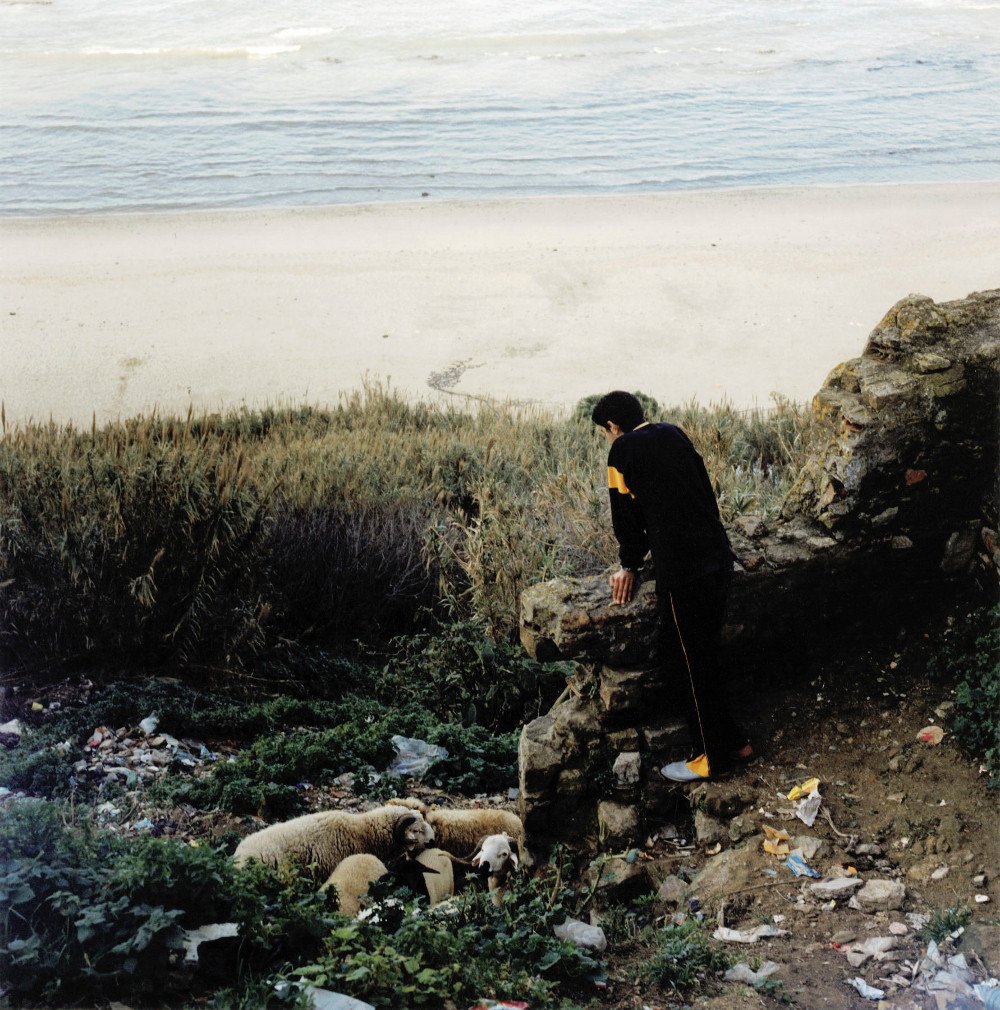
A portrait by Yto Barrada from her long-term essay A Life Full of Holes: The Strait Project.
“A refugee has lost control,” offers Steinberg in A Man of Good Hope (2014). “Great historical forces have upended him and he no longer has a place in the world. He has become an in-between sort of being, suspended between a past in which he belonged somewhere and a future in which he might belong somewhere once more.”
Documentary photographer James Nachtwey has observed much the same thing. “Refugees are not only sequestered in space,” wrote Nachtwey in a short essay accompanying photographs he took in the Za’atari refugee camp in 2013, “they are incarcerated in time, walled in between a past that’s been obliterated and a future that no longer exists.”
Notion of time
This notion of time interests me. Is it possible for an artist to show or visualise what it means to be a refugee incarcerated in time? I have my doubts.
In 1998, after a wilderness period that included working as a news photographer in Palestine, Moroccan-French artist Yto Barrada began her long-term photographic essay A Life Full of Holes: The Strait Project (1998-2004). Widely exhibited, it is a work of quotidian splendour.
Barrada’s essay records facets of everyday life in northern Morocco, a place she has described as “the destination and jumping-off point of a thousand hopes”. People are pictured waiting, seated, doing nothing; in many instances we observe them from behind.
One portrait compels. It presents a young man leaning against a broken wall overlooking a small flock of sheep. The grassy landscape around him is littered with the flotsam of modern consumer life. But it is his prospect that intrigues: a Mediterranean beach in North Africa.
It is a place of pleasure and estrangement, as Albert Camus re-cognised. The Algerian-born French novelist often sought gratification in the Mediterranean, but he also made it the site of a murder in his celebrated 1942 novel, The Outsider (also known as The Stranger).
Great argument
This fictional murder has been a source of great argument among scholars. Possibly the most elegant retort to Camus’s Orientalist tendencies is offered by Algerian journalist and writer Kamel Daoud, whose debut novel, The Meursault Investigation (2013), retells Camus’s novel from the perspective of the anonymous Arab murdered on the beach.
“If the sea and war separate the two countries, we remain neighbours bound to one another by a common sense of grief, denial and unease,” said Daoud in an interview in June.
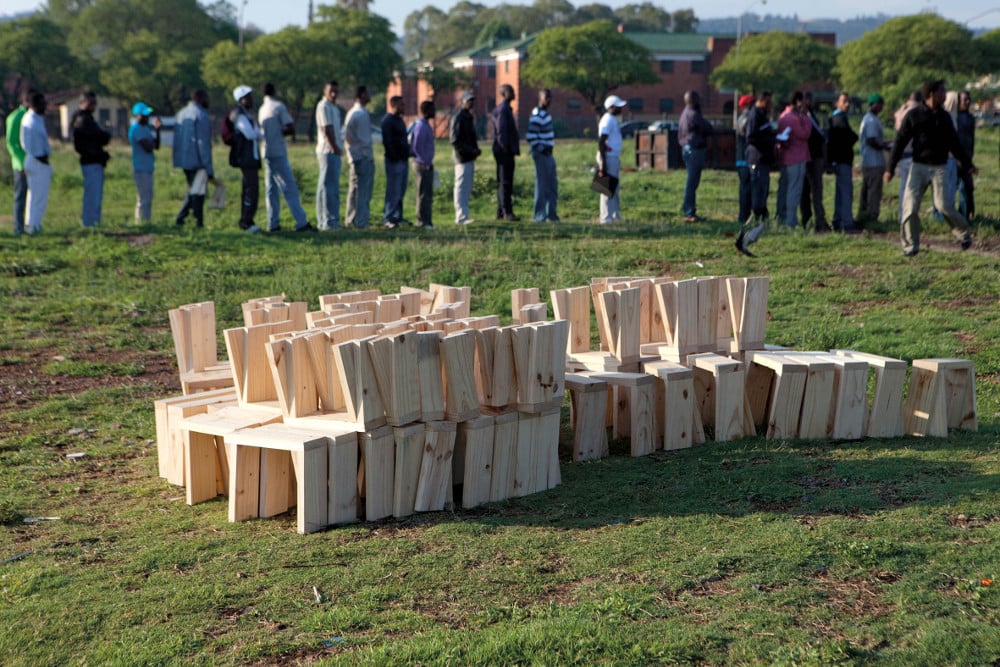
Artist Serge Alain Nitigeka delivered 100 wooden stools to a site outside the Refugee Reception Centre in Pretoria.
This unease is registered in Barrada’s photographs. It also figured in a work created by Francis Alÿs, a Belgian-born artist who studied architecture and engineering. In 2008 Alÿs got a group of children holding sailboats to form a human line extending into the sea. The project formed part of a speculative proposal to build a bridge across the Strait of Gibraltar using hundreds of boats and followed a 2006 project where the artist lined up 150 boats from Key West, Florida, in the direction of Havana in Cuba.
Whimsical in conception, Alÿs’s projects are a meditation on meaninglessness and aspiration. In 2002, for instance, Alÿs and 500 volunteers formed a line along a massive sand dune in Peru and began shovelling. Their aim: to move the dune. There is an ethical imperative to his work. When he exhibited his quixotic human bridge project at the Marrakech Biennale in 2009, it included a strident question: “How can one at the same time promote global economy and limit the movement of people around the globe?”
Walls and barriers
Right now, walls and barriers are being erected in Hungary to stem the flow of refugees from the east. This is unsurprising. Walls and barriers are a correlative of migratory passages. This fact has in turn sponsored an open-ended type of artistic practice in which border towns such as Tijuana, Melilla and Musina are locales for speculative thinking, and also action.
Starting in 2009, United States-born South African artist Thenjiwe Niki Nkosi organised a series of art projects in close proximity to the formerly electrified fence on South Africa’s northern border with Zimbabwe. Her collaborators were chiefly farm labourers in the Musina region, many of them migrants from southern Zimbabwe.
Nkosi helped locals to establish a theatre group. “The idea of creating an arts network emerged from conversations that a group of Johannesburg-based artists had with young artists in Musina, who said they felt isolated in terms of access to information and opportunities, and sorely lacked an organised arts community,” says Nkosi of her project.
Equal parts civic action and collaborative performance, the project culminated in an arts festival. Hospitality is an important facet of addressing the crisis that exists among strangers, for artists as much as citizens and governments.
In December 2011, Serge Alain Nitegeka, an athletic Burundian artist living and working in Johannesburg, hired a truck to deliver 100 handmade pine stools to a site on an open plot of land just west of Pretoria’s city centre. Nitegeka, who was 11 when he fled his homeland with his family, first to Rwanda, then Congo, later Kenya and finally South Africa, wanted to give the queuing refugees something practical: a chair.
Simple act of hospitality
As in Musina, groups of foreign migrants stand in queues outside the local Refugee Reception Centre from early in the morning. His simple act of hospitality initially angered local security officials. After a standoff, Nitegeka was allowed to distribute his chairs. “It was a small attempt at giving significance to the asylum seekers – to humanise them, to give them a bit of dignity,” Nitegeka later told Voice of America.
But refugees are not only sequestered in space, as Nachtwey observed: they are also incarcerated in time. What exactly does it mean to be incarcerated in time?
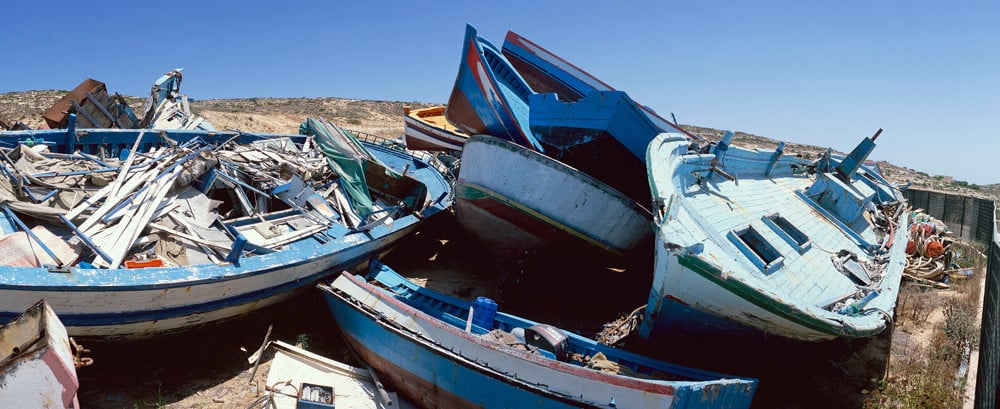
Isaac Julian’s Western Union Series No 9 (Shipwreck – Sculpture for the New Millennium), 2007.
I first met Phillip Chikumbo on September 8 2003. It was a Monday. He was wearing a blue-and-white checked shirt and squatting among a tangle of roots from the wild fig tree that grew in the middle of the prison courtyard at the Musina police station. His dark eyes were bloodshot.
“I haven’t eaten for two days,” he said. “They do not have food for us because we are unexpected visitors.”
Then 24, Phillip had been arrested for illegally entering South Africa from Zimbabwe, where he was born and raised. Later that day, Mail & Guardian chief photographer Paul Botes and I met Phillip again outside the Beitbridge Inn and Casino in Zimbabwe. Together we walked to Dulibadzimo, a township on the outskirts of Beitbridge, where we hired a sky-blue Datsun 120Y.
Bubble of light
The sun was setting when we stopped near a large baobab in a landscape without fencing. Guided by moonlight, we walked into the parched landscape. We followed a network of footpaths carved into the earth by cigarette smugglers and locals intent on bypassing the congested border administration at Beitbridge. Our destination was the bubble of light on the horizon: Musina, a place Steinberg characterises as “the most coveted destination on the continent”.
We talked about many things during our walk towards the light: family, politics, the crocodiles potentially waiting for us in the oily green Limpopo River, the electric fence on the other end, interracial sex, the untimely death of a footballer Lesley “Slow Poison” Manyathela on a road nearby, and Hustler magazine.
Crossing the border proved easy enough. The rains hadn’t arrived yet and the river was in abeyance. We crawled beneath the fence on our bellies like warthogs and hitched a lift with a passing truck. It is that easy to circumvent bureaucracy.
Easy is the wrong word. Shortly after we said goodbye to Phillip in Musina, he was arrested and deported. Once again he returned.
I met Phillip a year or so later. He was living in Durban and had acquired a new Zulu name. His plan reminded me of the Mozambican machine operator who had worked at my father’s factory in Pretoria. Everyone knew this man, who after work wore a plaid jacket and preached fire and brimstone on the train, as Mario. His pay cheque, however, named him Patrick Mamba.
Numerous numbers
I forget what Phillip’s Zulu name was. He is back to being Phillip. I have three numbers on my phone for him. Had I kept all the others, the list would run to 10, 12, possibly more.
Phillip usually calls at night or on weekends. Actually, there is no pattern. He calls when he feels like it.
“It’s me, Phillip,” he will say. Mostly he phones just to say hello.
Once, in 2008, he called to express fear. They – meaning us, South Africans – were killing people. He was afraid. He said he loved me. I didn’t know what to do with those words.
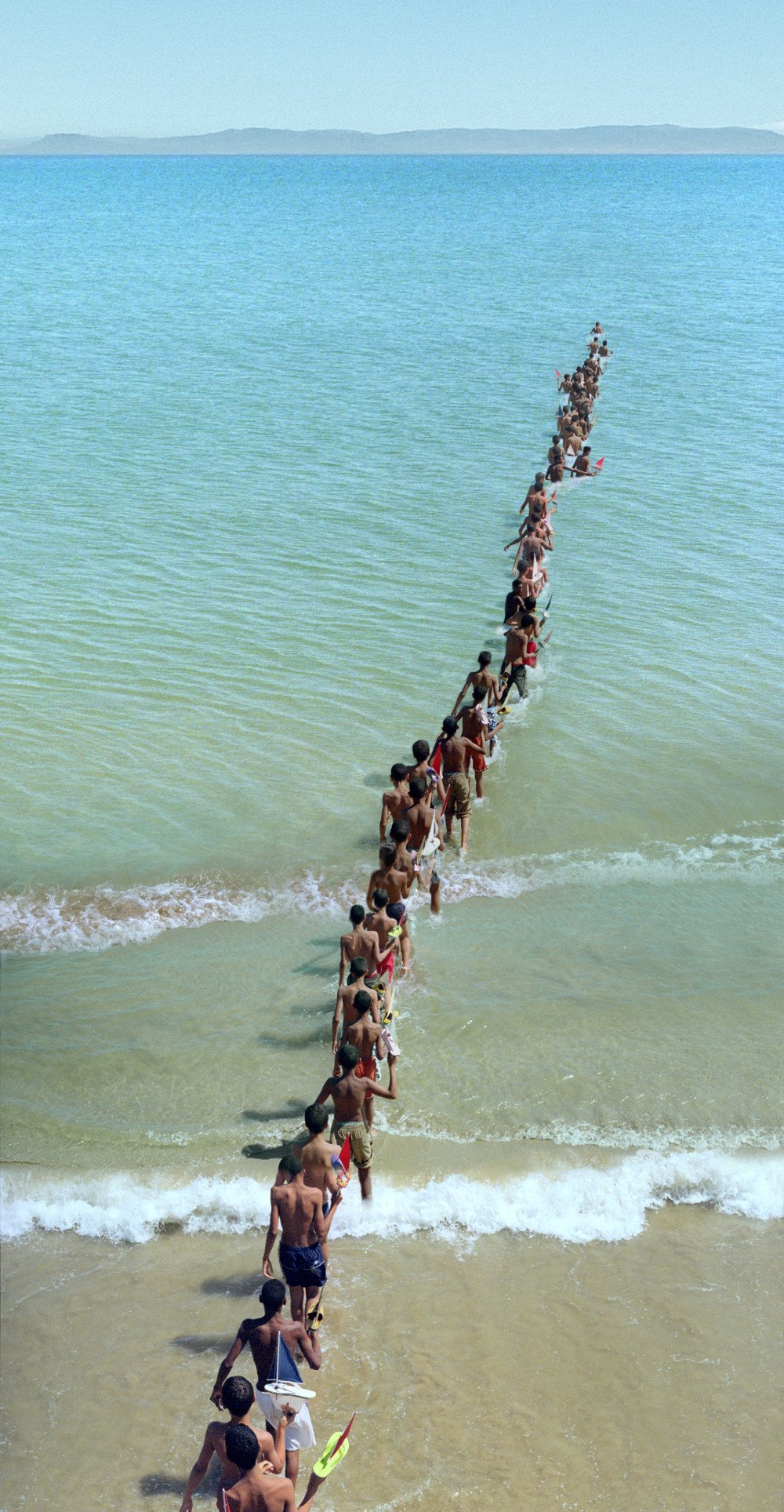
Don’t Cross the Bridge Before You Get to the River by Francis Alÿs.
Normally, though, our conversations are more benign. Phillip will ask how I am and then, on occasion, press me for money or some form of assistance, a job even. I am a writer, I tell him: I don’t employ people.
Phillip believes I have the power to help him. I doubt his faith. A while ago he sent me a handwritten note. His autobiography-in-progress is transcribed in neat capital letters on 13 loose sheets.
“When we are born,” it begins, “everybody’s thought is to be free and happy during our term of living. We expect to enjoy the so-called fruits of [life].”
Zanu-PF thugs
Frustrated by the lack of opportunity in Zimbabwe and the routine beatings administered by Zanu-PF thugs in the “rural area” where he spent his adolescence, Phillip decided to head for South Africa sometime in 2002.
Along the way he met a group of six other young travellers, four of them women.
Arriving at Beitbridge, they hired a guide to lead them across the border.
“We couldn’t suspect something might be wrong with the guy who was supposed to take us into South Africa,” writes Phillip.
After a 3km walk, which included his first river crossing, Phillip heard a loud whistle. Two men suddenly joined the group.
“We kept on going and not far from us appeared what seems to be about 20-something men wearing junk clothes and holding sharp pangas and sjamboks. We could feel we were in danger. We were told to strip everything we were wearing and surrender everything we were in possession of. Guma guma they were.”
Confidence tricksters
Phillip is describing his first encounter with the confidence tricksters, thieves and outlaws who operate in this liminal zone.
“They took everything we had and told us to go and work in South Africa and buy other clothes and cellphones. That was really bad experience, even to notice the girls we were with being raped in full view of ourselves.”
Not long after this harrowing ordeal, South African police arrested the group of ragged travellers. This was before I met Phillip.
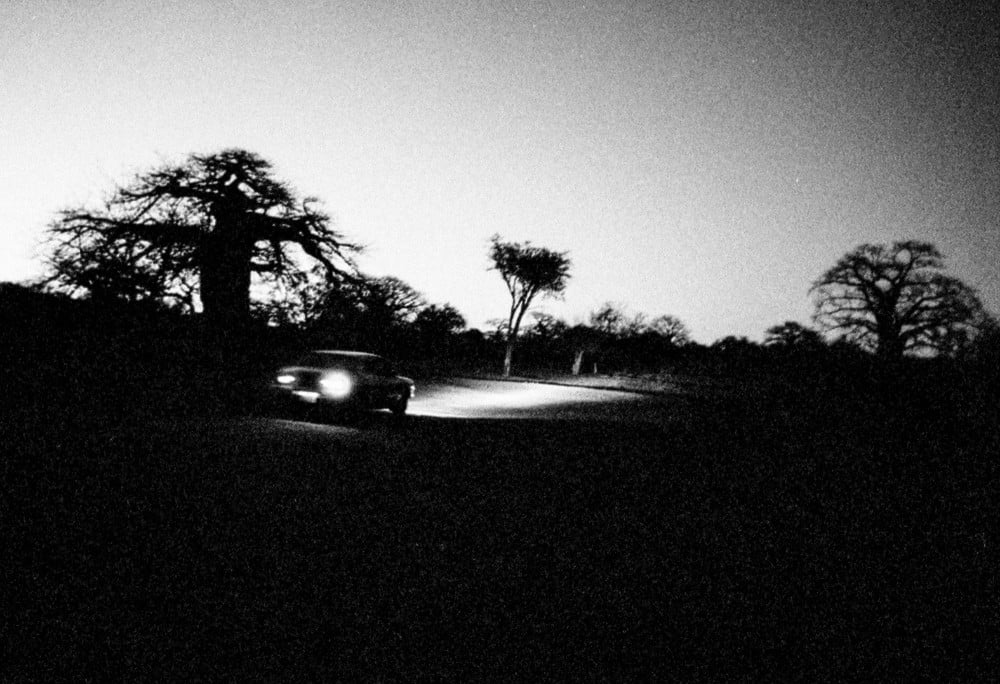
A taxi in which Phillip and Sean O’Toole travelled to a secluded point on the border between Zimbabwe and South Africa and walked into this country. (Paul Botes, M&G)
Phillip is not alone in his aspiration to find a better marketplace for his youth. In 2007, I met a 52-year-old truck driver named Cheick Osman Coulibaly in Kayes, a market town in eastern Mali.
Fluent in English, Spanish and French, Coulibaly told me about his first love, a tall teenager named Fatoumata Dembélé. We also spoke about his two wives and eight children, as well as his three clandestine trips to Europe, first in 1978 and again in 1982 and 1983.
“I hid in the caves of the ship,” he said of his first trip from Dakar. It was aboard a Greek ship bound for Le Havre. He lived off caffeine-rich kola nuts during the passage.
‘French are racists’
He liked Germany and Spain, but hated France. Despite his proficiency in French, he said, he was unable to find work. “I was really surprised.” Surprise soon matured into wisdom. “The French are racists,” said Coulibaly without bitterness.
Around this time I also met some of the young Senegalese men who had braved the watery passage to the Canary Islands. They included Assane Fall, a fisherman born in 1982. In 2006 he made two attempts to reach Spain’s island territory. A hurricane thwarted his first attempt and Spanish authorities detained him on arrival on his second. Fall spent a month and half in a military camp in Las Palmas before being flown back to Dakar. He met other men like himself, from Morocco, Mauritania, Gambia and Mali.
“I know they don’t want me,” he said. “I’ll do whatever I have to do – harvest grapes, whatever.”
These stories, recounted in a jocular fashion and filled with bravado, do not in any way chime with London-born artist Isaac Julien’s film Western Union: Small Boats (2007). The final instalment of a trilogy of audiovisual film installations, Western Union employs metaphor and ellipsis to tell the story of a fictional boat journey from Africa to Europe. It eschews documentary description in favour of an operatic imagination of the bare life. The film is partly a conversation with Italian director Luchino Visconti’s Sicilian landscapes and implicitly critiques what Julien has described as the “stereotypical mode of exploring these questions of migration”.
The film’s baroque pageantry however, is counterbalanced by Julien’s acute sense of landscape and setting. His film includes documentary footage of abandoned wooden boats used by African migrants to reach Europe.
Boating graveyards
Julien has also photographed these boating graveyards. He views these leftover husks as a kind of sculptural archetype for the new millennium. It is a potent idea, one that supplants Vladimir Tatlin’s unrealised Bolshevik monument from 1919 as a metaphor of unfulfilled potential.
But the Mediterranean’s shipping graveyards are far away from Cape Town, where I live. I only know Phillip’s story; know it in a sense that it possesses the rectitude of truth.
I have told Phillip’s story countless times, in various versions, to different people. It is never a resolved telling, in part because his biography lacks a sustained trajectory or narrative arc. Phillip’s story is one of perpetual beginnings, of taking on new jobs with erratic bosses in various parts of South Africa. His biography is one of perpetual reset.
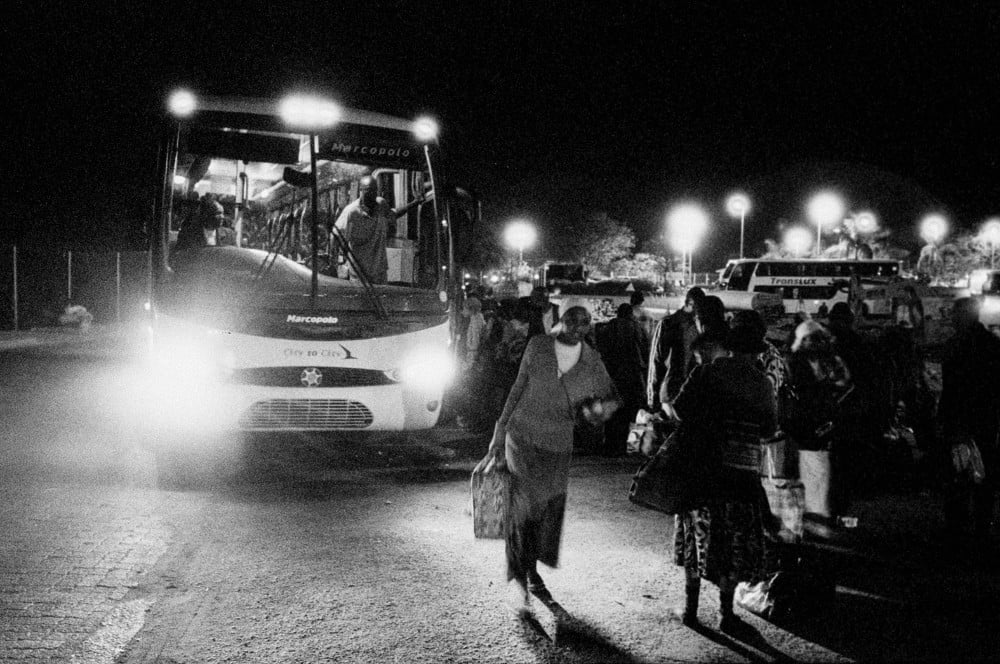
Many migrants and traders cross the border legally at Beit Bridge. (Paul Botes, M&G)
As a result, my own telling of his story tends towards randomness. I met Phillip, and then … I met his younger brother, Wellington, who fell out a tree and died. It was a risk. Wellington felled suburban trees, which is one of those mysterious occupations announced in hand-lettered signage by young men at traffic intersections in Gauteng’s prosperous suburbs.
Phillip once mentioned that his family had read the article I had written about him in this paper in 2003. It had been republished in Zimbabwe. “It’s very obvious: I can’t live in that place of Mugabe any more,” I quoted Phillip.
Hurt and angered
His father had been hurt and angered, he later learned. I only discovered this much later, in between the fear elicited by the xenophobic violence of 2008 and the death of his brother in late 2011.
Phillip said he would never return home. But Phillip has gone home. He has visited his parents on a number of occasions. South Africa is home, or something approaching a version of home. Phillip is still suspended between a past that’s been obliterated and a future that is perpetually starting.
He remains a man on the cusp of becoming a demobilised civilian, a citizen, a human in a land increasingly frightened and angered by strangers from elsewhere.
Until he achieves that end, which isn’t really an end but a moment in his life journey, all I can reasonably do is describe the milestones of his interminable journey.
This is an edited version of a keynote talk presented at the Spaces of Displacement conference hosted by the Goethe-Institut in Lagos, Nigeria.